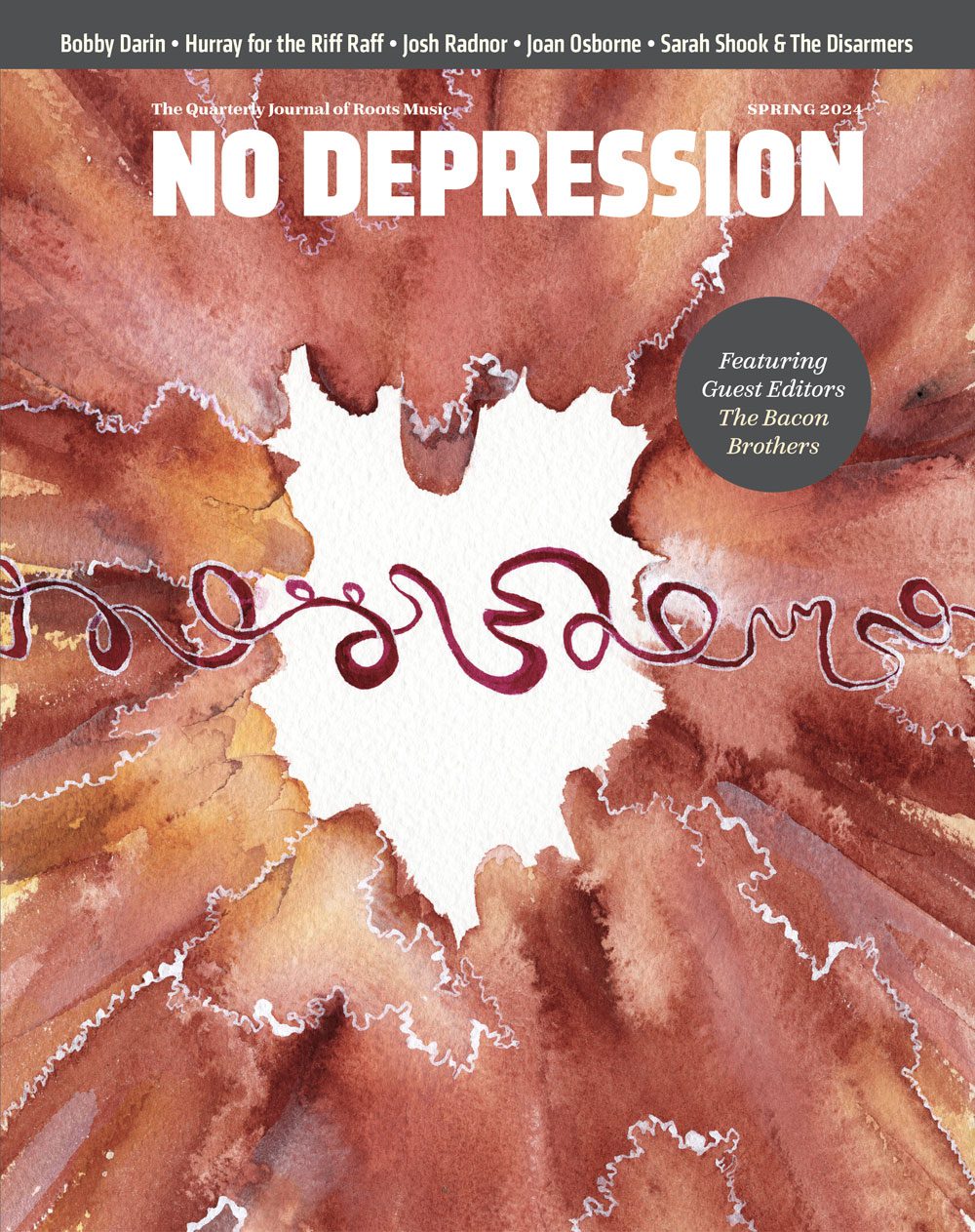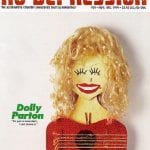Sacred Steel – A joyful noise
It was a sunny Memorial Day, and as boats cruised up the river toward the spires of Georgetown University, a stiff breeze whipped across a temporary stage, perched on an outdoor balcony overlooking the Potomac River. Phil Campbell, a portly black man in glasses and neat gray slacks, stepped to the microphone, and said, “We’d like to do a number called ‘I Feel Good’. It’s not James Brown; we’ve got another one, because when we’re in church, we feel good.”
When the Am-Jam Festival, a one-time affair organized by the New Orleans Jazz & Heritage Festival, came to Washington’s Kennedy Center last year, the big stage hosted rousing performances by the likes of Los Lobos and Arlo Guthrie. But the day’s most exciting moment occurred on that small stage.
Campbell’s song might as well have been by James Brown, for the Campbell Brothers gave this old hymn a funky, rocking groove. And when singer Katie Jackson — a short, stocky woman in a yellow-and-purple dress — started wailing, “There’s something about the name of Jesus that makes me feel good,” her big voice skated across the octaves with gravity-defying ease. Right on her heels was an eerie, quivering sound that slid through notes with equal agility but with a sharper, metallic edge.
Jackson’s pursuer was a pedal steel guitar. Chuck Campbell, a 41-year-old utility serviceman in a trim afro and a brown plaid shirt, played the instrument as if he were Junior Brown tackling the Mahalia Jackson songbook. Sliding his silver cylinder across his 12-string instrument, Chuck and Katie engaged in a duet, tossing phrases back and forth, testing each other with melismatic glides up the scale. The middle-aged church women in the crowd knew just what to do; they were swinging their hips to the beat and shaking their arms to the shouts, and soon the rest of the observers had no choice but to join in.
Most of the audience had never heard anything like it, for the pedal steel guitar, the ultimate country music instrument, had been wrenched out of its usual context and turned into the lead instrument of an old-fashioned, testifying gospel group. The same instrument that sounds like a weeping balladeer or a turbo fiddle in a hillbilly band suddenly resembled a Delta slide guitar or an ecstatic choir singer. An instrument we thought we knew had revealed a whole new personality.
It was new to most of the world, that is, but inside the House of God (a.k.a. the Church of the Living God), the steel guitar has been the dominant instrument since the 1930s. They call it the Sacred Steel, and services in this African-American Pentecostal church are built around instrumentals where the steel’s ringing tones are the lead voice and vocal numbers where the singer and steel trade phrases in a kind of duet. Seven decades of this has created a musical genre unlike any other and a set of virtuosos to rival the world’s best steel guitarists. But few, even in other black churches, knew Sacred Steel even existed.
“The first time I heard that Sacred Steel,” remembers Katie Jackson, who married into the church, “was in Nashville for a House of God Assembly, and I had never heard an instrument like that. That Hawaiian guitar gives the service that extra pick-up it needs. I know a lot of country musicians use it, but not like Sacred Steel players, who have the Holy Ghost in them.”
On the Campbell Brothers’ album Pass Me Not, the old hymn “Walk With Me” begins with a bluesy Chicago stomp right off a Muddy Waters record. Phil Campbell and Chuck Flenory kick the song off with a regular bass-and-guitar figure before Chuck Campbell comes in with a slicing, slashing pedal steel solo. Jackson enters soon after with a gritty, Koko Taylor-like growl, asking the Lord to accompany her down the path of life. Chuck follows with another wild, octave-leaping solo; then the third Campbell Brother, Darick, jumps in with a lap steel solo that finds him running up and down the same string, rollercoaster-style.
“Oh my goodness,” Jackson exclaims, “when I’m singing with the Sacred Steel, my voice reaches a certain peak it never reached when I was singing with organ and piano. I’ll practice a song at one key and at one tempo, but when you get up there with the Sacred Steel, you start to feel it and the higher, faster notes just come out. And that steel guitar is so close to my voice that whatever I sing, they can play it, too.”
“When I play with Katie,” Chuck Campbell adds, “it’s like a vocal duet. You try to make the strings sound like a voice, and you hear everything from a yell to a scream to a moan. You run into a lot of gospel singers who can have fun in church, but they haven’t perfected their skills so they can hit particular notes. Katie has great skills and she makes me sound good, because she sets the stage almost like a point guard giving you the basketball in the right place for a slam dunk.”
Sacred Steel might still be a secret locked away in the House of God if it hadn’t been for Robert Stone. Working as a folklorist for the State of Florida, Stone is always on the lookout for unknown artists, and he was intrigued by a 1992 phone call.
“One of my jobs is to find folk artists all over the state,” explains the 55-year-old Stone, “and it’s a big state, so I rely on other people to be my eyes and ears. Mike Stapleton, a good friend of mine, co-owns the Banjo Shop, in Hollywood, near Fort Lauderdale. One day he called me and said, ‘Bob, these black men are coming in and buying these lap steels; they say they play them in church.’ He held the cordless phone up, so I could hear a little bit.”
“That little bit I heard convinced me I had to go down there. The musicians had told Mike, ‘Well, we can play a little, but you should really hear Glenn Lee and Aubrey Ghent.’ So on my first trip I interviewed Aubrey and taped him playing three pieces unaccompanied. It was like nothing I had ever heard before; it gave me goose bumps. It changed the whole way I perceived the steel guitar, because it was so African-American.




